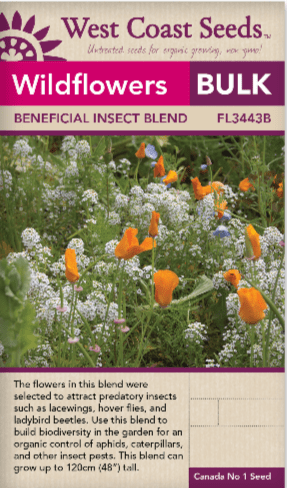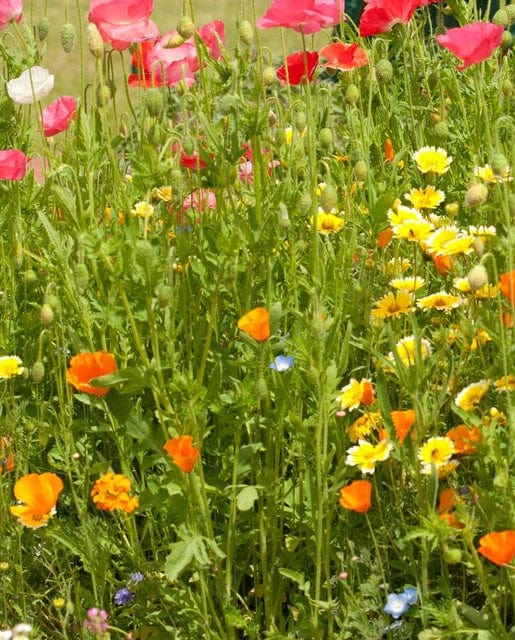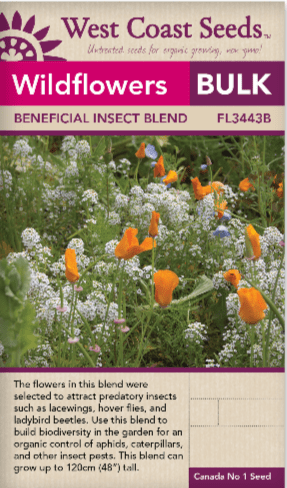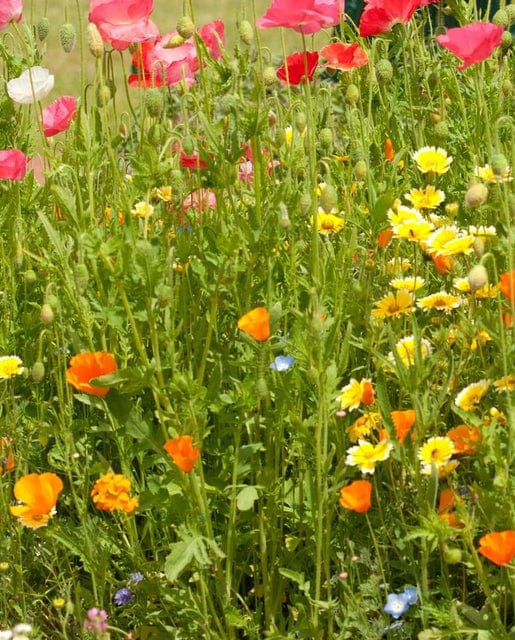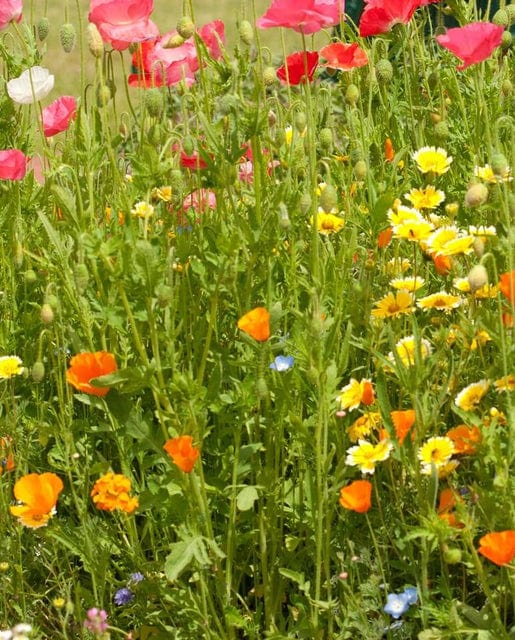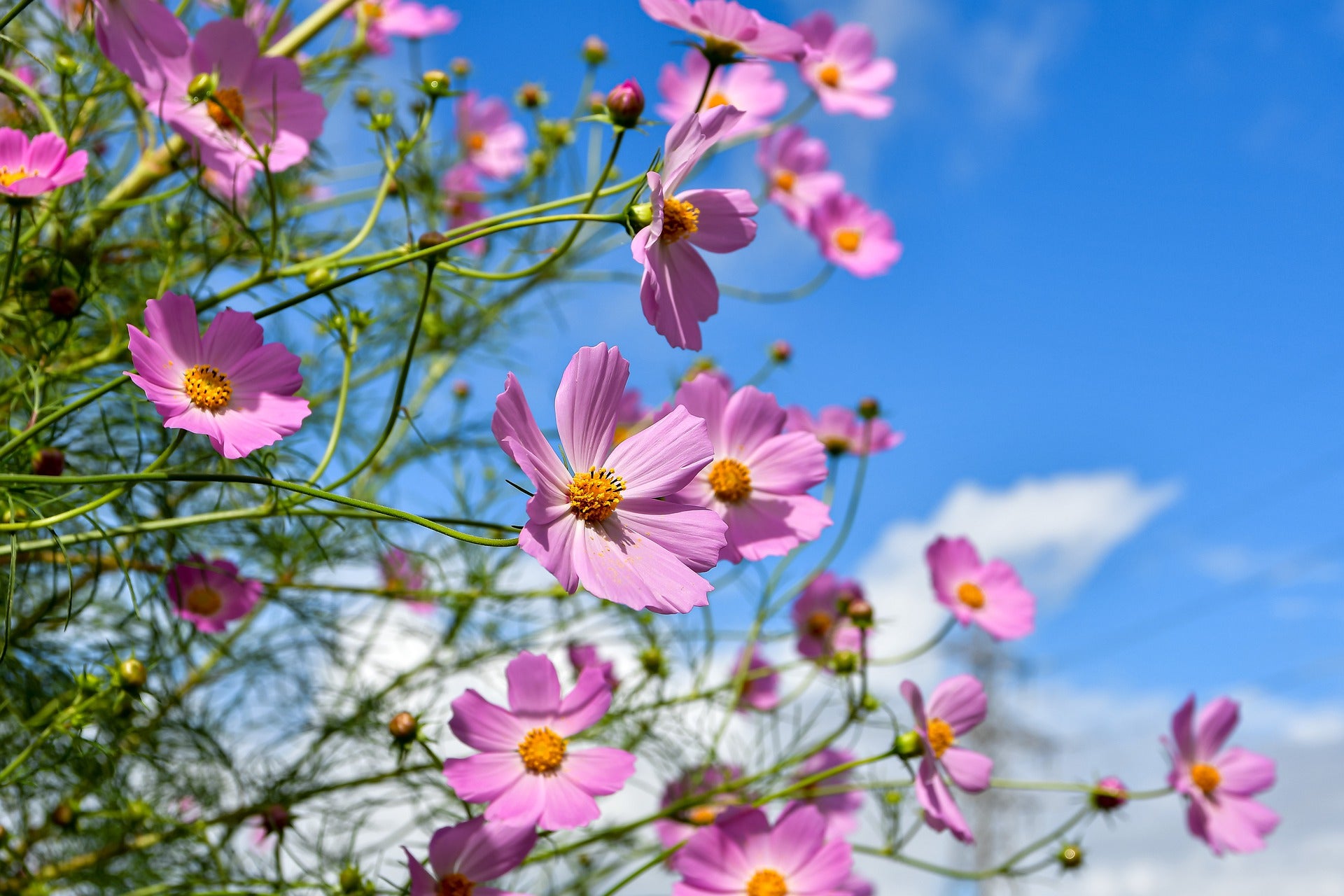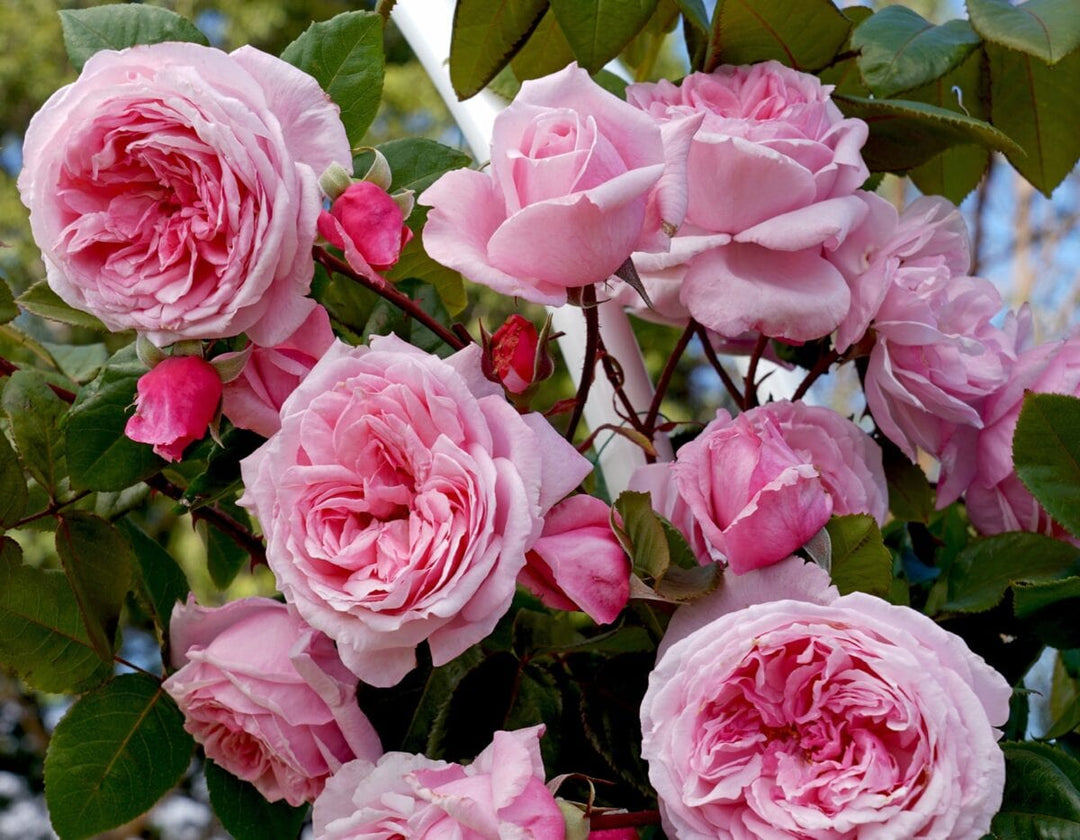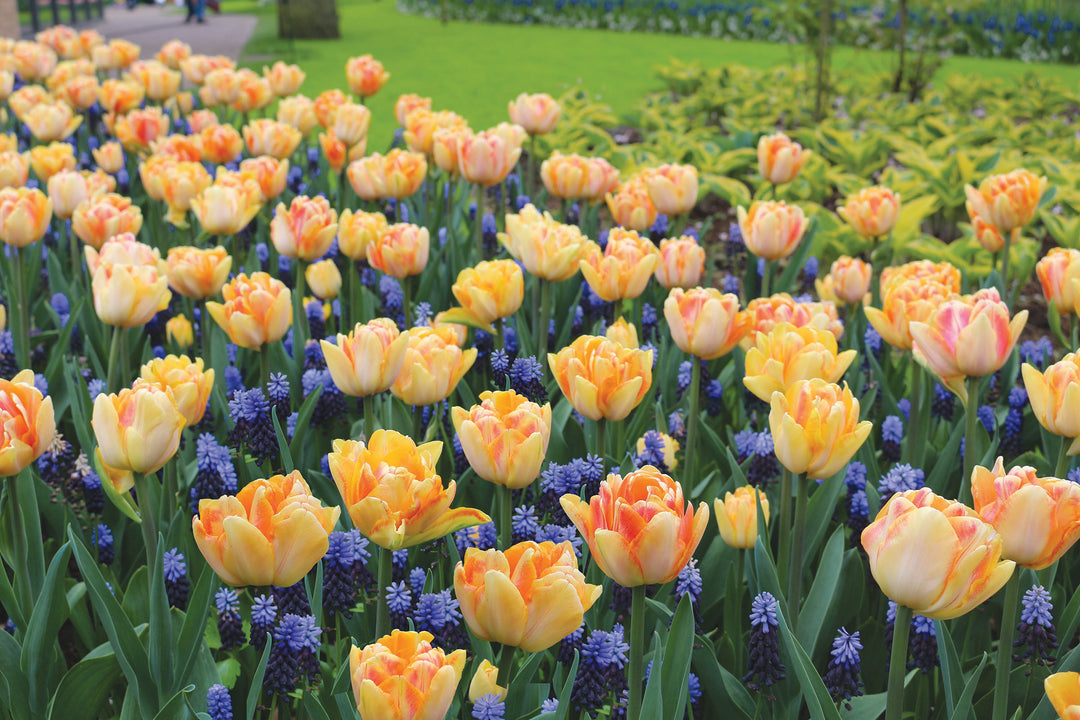BULK Wildflowers Beneficial Insect Blend - West Coast Seeds
- Canada-Wide Shipping
- Flat Rate Shipping on Seeds
- Secure Payment & Checkout
- In stock, ready to ship
- Backordered, shipping soon
Fera flores
- Flowers selected to attract predatory insects
- Attracts lacewings, hover flies and ladybird beetles
- Controls aphids, thrips, and caterpillars
- Control insects naturally
- Recommend 198g per 1000 sq. ft.
25g (Covers Approx. 126 sq ft)
Different flowers attract different sorts of insects. The flowers in this blend of Beneficial Insect Blend wildflower seeds were selected to attract predatory insects such as lacewings, hover flies, and ladybird beetles. With a healthy population of these insects in your garden, pest species like aphids, thrips, and caterpillars will be controlled naturally. This blend also attracts generalist pollinators that will increase yields in fruiting plants from peppers to peas. Feeding a healthy and diverse insect population is the best general way to encourage garden health and control the insects that cause the most obvious garden problems.
Recommended rate of application: 198g per 1,000 square feet.
Below is a list of the ingredients in our Beneficial Insect wildflower seeds. This blend was designed to include the maximum number of flowers known to attract pollinators and predatory insects that feed on pest species. For instance, dill is attractive to lacewings, ladybird beetles, and the tiny parasitoid wasps that kill aphids. The purpose of this mix is to increase the biodiversity in your garden and take advantage of naturally occurring food pyramids to control pest insects and improve pollination at the same time. The ideal time to plant wildflower seeds is March to April.
| Baby Blue-Eyes | Nemophila menziesii |
| Bishop's Flower | Ammi majus |
| Black-Eyed Susan | Rudbeckia hirta |
| California Poppy | Eschscholzia californica |
| Candytuft | Iberis umbellata |
| Cilantro | Coriandrum sativum |
| Cosmos | Cosmos spp. |
| Fennel | Foeniculum vulgare |
| Gayfeather | Liatris spicata |
| Globe Gilia | Gilia capitata |
| Lance-Leaf Coreopsis | Coreopsis lanceolata |
| Purple Prairie Clover | Dalea purpurea |
| Shasta Daisy | Chrysanthemum maximum |
| Siberian Wallflower | Cheiranthus allionii |
| Sweet Alyssum | Lobularia maritima |
| Wild Bergamot | Monarda fistulosa |
Direct sow early March to the end of May. Wildflower seeds can also be sown in the autumn, but you may lose a certain percentage of seeds to water, birds, and animals. To make the most of the annual species, direct sow in March.
If there are no plants (including weeds) growing in the site you want to plant, there may be a problem with the soil. Possible issues may be soil fertility, lack of drainage, or the need for soil amendments to improve texture. In such spots (eg, beneath a cedar tree), few plants will thrive, including wildflowers.
Keep the seeded area as evenly moist as possible to help the seeds germinate and the young seedlings become established. Weeds need to be kept under control. Once they are growing, most mixes will not require additional water except in long periods of hot, dry weather. All of our mixes should re-grow for several years, but will benefit from re-seeding. In late summer, many of the components will produce seed heads that can be harvested and replanted the following spring.
Canada Shipping
All regular packaged seed* orders have a flat rate shipping fee starting at $6.85 for Letter Mail shipping and $14.85 for Expedited Shipping.
*Some Bonus Packs, Sprouting Seeds, Bulk packs, Sprinkle Bags, and Sprinkle Cans will only be available with Expedited Shipping due to larger packaging and weight.
US Shipping
US Shipping has been suspended indefinitely. We apologize for any inconvenience this may cause. We hope to serve our US customers again in the future.



